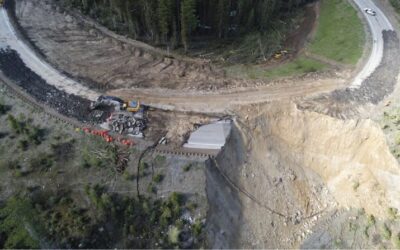Child care has long been a dire issue in Teton Valley, Idaho. In less than two years, the options have become even more limited: One facility, Head Start Driggs, closed due to lack of staff. Discoveries Playschool shut its doors as its owner pursued other opportunities. And Little Learning Academy stopped accepting children under two years old.
According to the 2020 census, Teton County is home to some 12,000 residents, yet it only has one licensed daycare facility for children under two: Building Blocks. Even the future of that facility is uncertain, as its lease ends in May and staff are currently in search of another building.
Faced with this child care desert, Driggs community members are hoping to acquire a new daycare facility to fill gaps. KHOL contributor Natalie Schachar spoke to Driggs Mayor August Christensen by phone to learn more about the proposal for a new facility, which could serve several dozen families.
The following interview transcript has been edited for clarity and brevity.
Natalie Schachar/KHOL: Mayor, thanks so much for joining us on KHOL. Can you paint a picture for us of what’s happening with child care in the Teton Valley?
August Christensen: Sure. So there’s just one licensed child care facility open in Driggs. They currently have seven pages of a waitlist, and these are families who are on the waitlist, professional families that need to be working, that are unable to work. These are families that are considering moving from our valley or are currently in the process of moving just because of the lack of child care.
KHOL: It sounds like you’re really at a tipping point. What was the proposal you introduced at the Teton School District Board meeting on the night of Monday, Nov. 14?
Christensen: We have the opportunity to acquire a donated house, a 4,000-square-foot, single story, renovated home that would be perfect for child care. It has lots of big open spaces, and we presented to the Teton County, Idaho School District Board to be able to lease a small footprint of land from district property, to be able to move this donated home onto existing land.
KHOL: So this would be a cost efficient way to have more child care options, but the community would still need someone to run and staff a new facility. How do you foresee the center overcoming those challenges?
Christensen: It is going to take a village. We’re going to need our whole community behind this to figure out the child care situation here. We’re going to need parents. We’re going to need professionals. We’re going to need adults that don’t even have children. We all need to come together to be able to figure out how we can keep our community working and providing child care, just like housing. Just like how we have to figure out how we can provide affordable workforce housing for the people that work here in Teton Valley, we need to figure that out as well for child care.
KHOL: To help find solutions to this crisis, you also supported the formation of the Collaborative for Early Learning, a work group trying to expand child care access in the valley. This model has been adopted in other places across Idaho. What else is the collaborative focused on?
Christensen: The collaborative work’s focus is, in general, what does the valley need for early care and education, and how can we take steps together as a community to support that? So, there are 22 collaboratives in the state of Idaho, and each one is unique and different. We are in the middle of a strategic plan to see what exactly our community needs. So that part is evolving. But one aspect that I envision is, how can we support all the private centers? So maybe that’s bringing everybody together for shared training or, hey, we have a bookkeeper, we can all share this bookkeeper together. Or different services so that individual providers are not feeling burned out over the long term.
KHOL: When it comes to the proposal now before the district: How did the school board respond and what are the next steps?
Christensen: I’m super excited that they responded in a positive way. All of them shared interest in moving forward, which is very exciting. We do have a very tight timeline in regards to the building because it will need to be moved in the spring. That being said, the school board does need to be able to have an MOU [memorandum of understanding] and a lease agreement in place to be able to move forward. So those are the next steps we’re working on right now.
KHOL: Mayor, thank you again for joining us today on KHOL.
Christensen: Thank you, Natalie.





